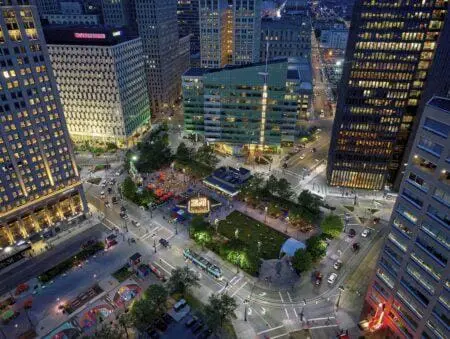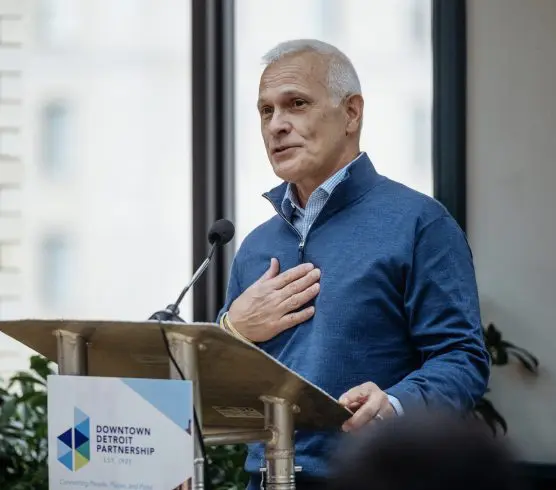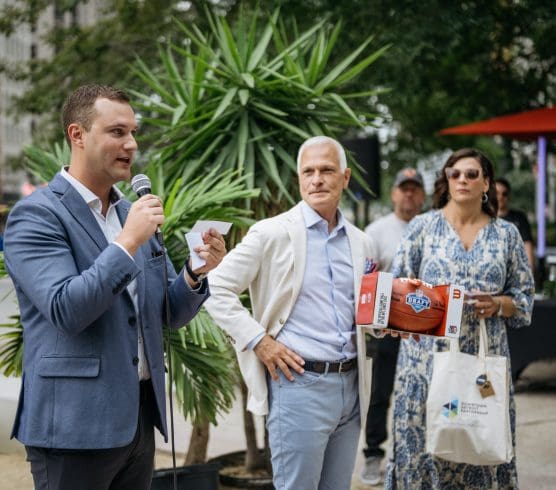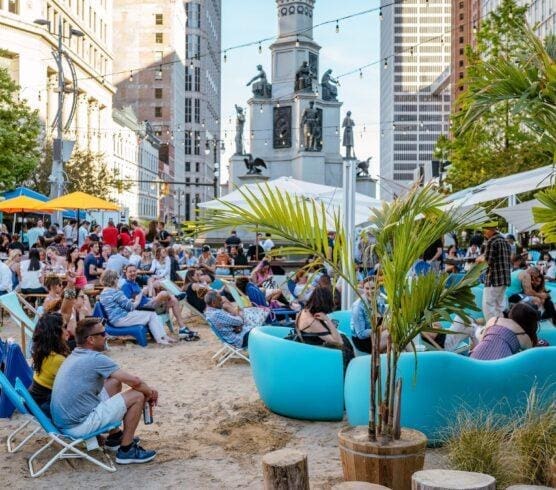Downtown is not dead; the proof is in the projects
“The reports of my death are greatly exaggerated,” says every U.S. downtown with apologies to Mark Twain.
On Friday, March 10, 2020, we went home for the weekend, expecting to be back that following Monday. Instead, we didn’t go back. The millions that were able to set up remote offices did just that, and the rest of the workforce set up unemployment accounts. Downtown Detroit was eerily quiet.
The thoughts that downtowns would never come back started taking hold. Millions of square feet of office space sat empty, thousands of hotel rooms went dark and small businesses wondered where all the customers had gone. Would Downtowns ever be the same? The answer is no, but not in the way many expected. Downtowns are not dead. On the contrary, they are very much alive, and Detroit is proof positive.
The Downtown Detroit Partnership’s 2022 Downtown Detroit Community and Development
Update, to be released at our Fall Stakeholder Meeting (Wednesday, September 28), validates
the healthy rebound. With eight recently completed projects totaling $2.98 billion in construction, Detroit is on one of the most positive trajectories across the nation. Even more remarkable is that our report includes just under 2,500 new residential units. The city is welcoming businesses, employees, residents and visitors with excitement we may not have seen since the 1920s when the Downtown Detroit Partnership was born.
The report also demonstrates what we’ve learned because of the pandemic. Cities survive and thrive on community and public spaces; these are the constant in both good and challenging times.
It’s too soon to plan the ticker tape parade welcoming remote office workers back full time; it’s not going to happen. Hybrid cities and offices are here to stay. And, if they are here to stay, call me biased, but if you’re going to spend a few days a week in an office, where better than in a downtown office surrounded by great public spaces, outstanding food options and accessible health, wellness and entertainment options before, during and after work?
Downtown Detroit can’t die because it is part of our state and regional identity. And even that is changing, not standing still. The Motor City is becoming the Mobility City. Our downtown is exploding into a hotbed of transformation, with public and private sector partners leading our future in transportation innovation and employee development. Furthermore, diversity and connectivity are two of the strongest characteristics of downtown environments.
We have made outstanding improvements to our downtown public spaces. Campus Martius Park often gets credit for Downtown Detroit’s transformation. But the Downtown Detroit Partnership continues to build on our commitment to the community. We made expanded programs and focused on opportunities even more during the pandemic; there are more to come, as you’ll see in the Update.
I love this line from an article published on Bloomberg.com discussing the pandemic’s impact: “Downtowns and the cities they anchor are the most adaptive and resilient of human creations; they have survived far worse.”
I think few downtowns can speak to this as much as Detroit can. Further, central business districts are not just about business anymore. They are centers of culture, movement, design, and everything that makes life fuller. Maybe we should stop calling them business districts as they are indeed central to so much more.



